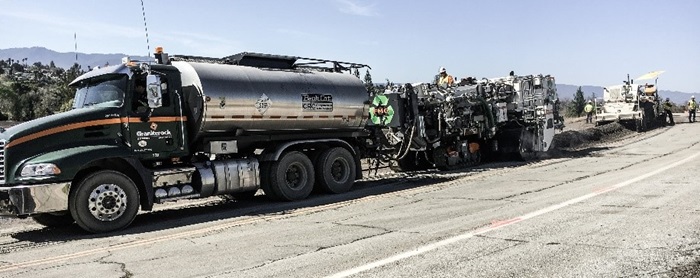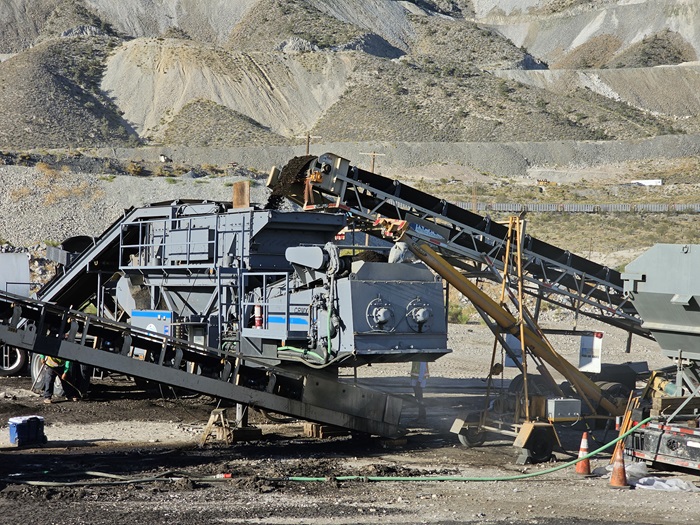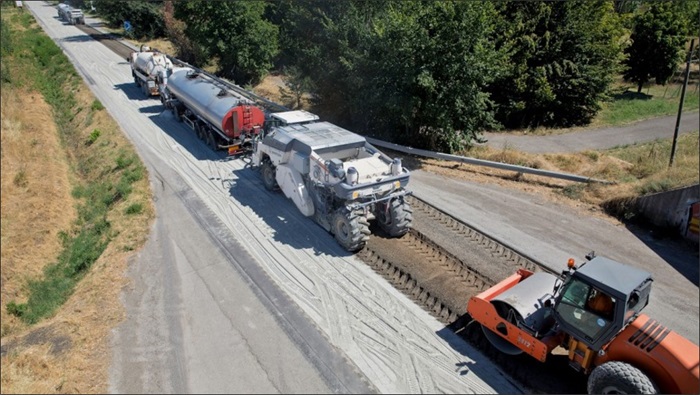Cold Recycling (CR) for Asphalt Pavements
Cold Recycling (CR) techniques are powerful strategies to rehabilitate pavements. When properly applied, it has long term economic benefits—allowing owner agencies to stretch their available funds while providing the traveling public with a safe and reliable driving surface.
Figure 1. Full Depth Recycling

Figure 2. Partial Depth Recycling

Figure 3. Cold Central Plant Recycling
Why Cold Recycle?
- Proven technology with a range of strategies to suit most rehabilitation challenges
- More sustainable if designed and constructed correctly
- Uses all existing, paid for materials
- Requires limited new materials
- Minimizes trucking operations
- Shorter construction time, less traffic disruption
- Cost effective / lower life-cycle cost
- Removes distresses instead of covering them
- Selected strategies enhance structural capacity
- Extended pavement life
- Recycled roads can be recycled again
- Specifications / nSSPs are already in place
- Experienced contractors are already working in California
Cold Recycling Techniques
Typical flexible pavement recycling strategies used by Caltrans include:
In-Place Recycling
- Partial Depth Recycling (PDR)
- Full Depth Recycling (FDR)
Cold Central Plant Recycling
Although flexible pavement recycling strategies are capable of treating many different types of distress, not all rehabilitation projects are good candidates. Some strategies are better suited to treat certain distresses, and some projects are more suited to conventional rehabilitation methods. Review and assessment of pavement conditions, structural capacity, material properties, geometrics, traffic concerns, constructability, and cost effectiveness should be conducted as part of the project evaluation process.
Appropriate application of any rehabilitation strategy requires a comprehensive field review prior to design to evaluate the type, severity, and extent of the pavement distress (for more information, refer to the Pavement Evaluation Manual). The district Materials Engineer should be consulted during the initial project assessment. Other resources include as-built plans, the Photolog, Pavement Condition Report, and corresponding mapping available from Geographic Information Services (GIS).
Available Specifications
- Section 30-2 Full Depth Recycling - No Stabilizer
- Section 30-3 Full Depth Recycling - Foamed Asphalt
- Section 30-4 Full Depth Recycling - Cement (Upcoming 2024 Updates)
NSSPs require pre-approval by HQ Pavement. If you would like a copy of the non-standard specifications in Word format, please send a request to any of the contacts listed.
- NSSP-30-5 Partial Depth Recycling (11.09.2022)
- New version will be published in the 2024 Standard Specifications (available October 2024)
- NSSP-30-7 Cold Central Place Recycling (04.05.2022)
Cold Recycling Resources
Webinars and Presentations
If you would like a copy of the presentation slides, please send a request to any of the contacts listed.
2022-2023 Cold Recycling Webinar Series
- Part I: Project Selection & Development of the In-Place Recycling (IPR) Industry (October 2022)
- Project Selection & Development of the In-Place Recycling (IPR) Industry Presentation Slides (upon request)
- Project Selection & Development of the In-Place Recycling (IPR) Industry Video Recording
- Part II: Partial Depth Recycling (March 2023)
- Partial Depth Recycling Presentation Slides (upon request)
- Partial Depth Recycling Video Recording
- Part III: Full Depth Recycling (June 2023)
- Full Depth Recycling Presentation Slides (upon request)
- Full Depth Recycling Video Recording
- Part IV: Cold Central Plant Recycling (September 2023)
- Cold Central Plant Recycling Presentation Slides (upon request)
- Cold Central Plant Recycling Video Recording
2020 Introduction to Cold Recycling Webinar
- CR Training Presentation Slides (upon request)
- CR Training Day I Video Recording
- CR Training Day II Video Recording
Guides
- Highway Design Manual: Chapter 630 Flexible Pavement
- Caltrans In-Place Recycling Manual
- DES Website
- Office of Asphalt Pavement
- Wirtgen Cold Recycling Technology Manual (external link)
- Road Resource Website (external link)
- Portland Cement Association Manual (upon request)
Cold Recycling Contacts
Office of Pavement Recycling and Job Order Contracts
2389 Gateway Oaks, Suite 200, MS-91
Sacramento, California 95833
Leo Mahserelli, P.E.
Email: Leo.Mahserelli@dot.ca.gov
Phone: (916) 639-5588
Christina Pang, P.E.
Email:Christina.Pang@dot.ca.gov
Phone:(916) 531-5418
Partial Depth Recycling (PDR): PDR@dot.ca.gov
Full Depth Recycling (FDR): FDR@dot.ca.gov


